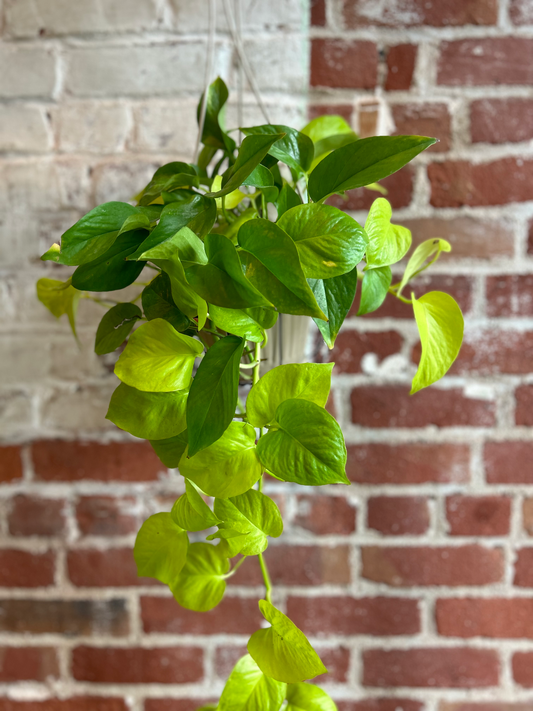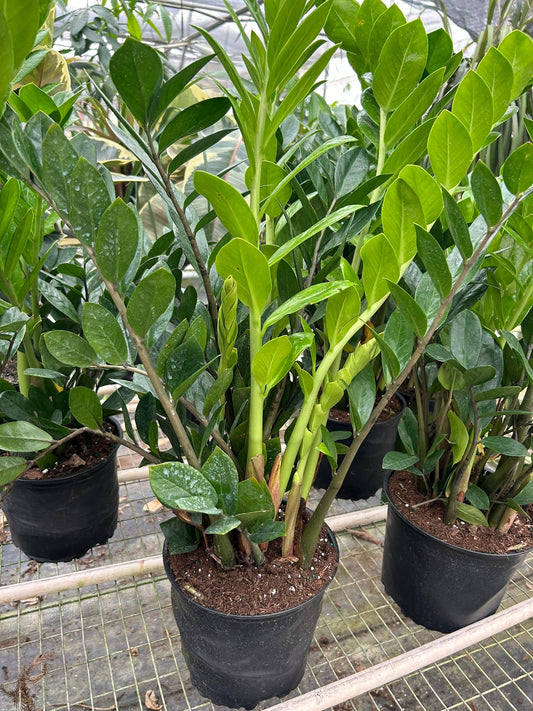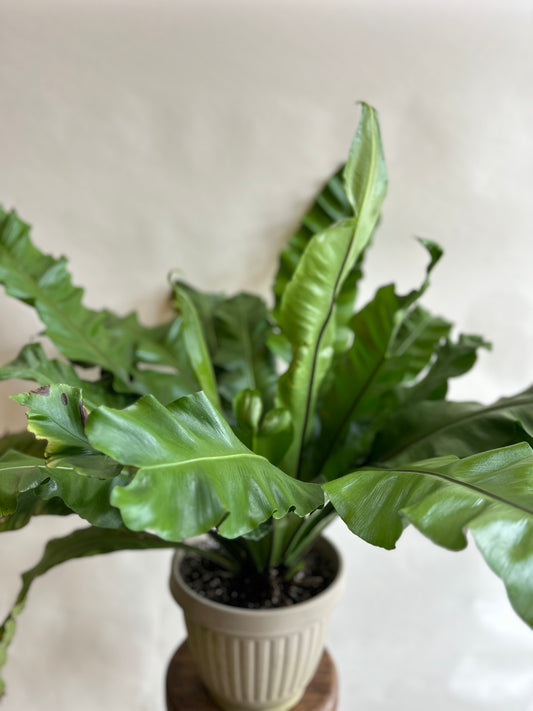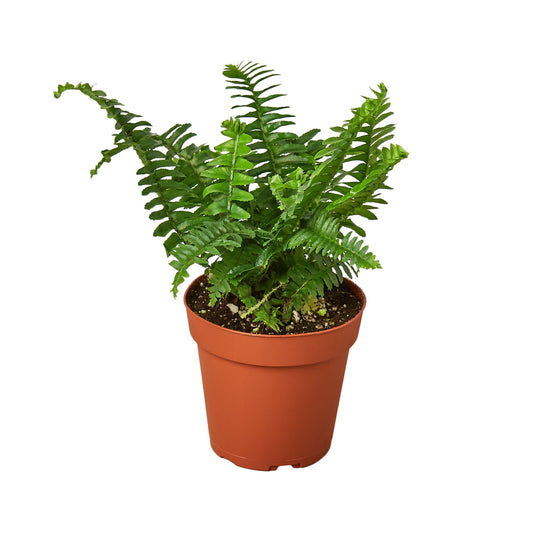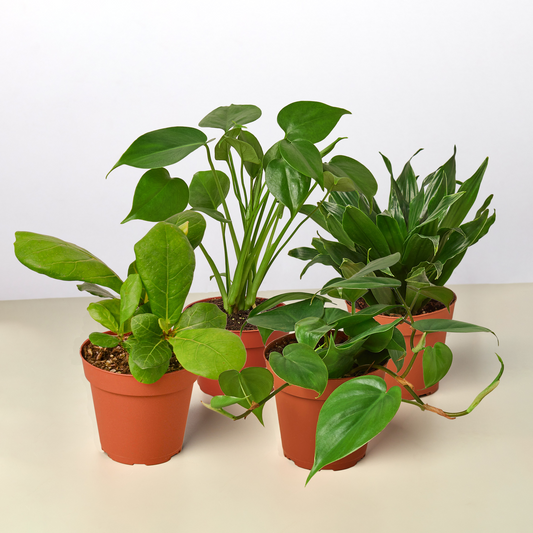How to Grow and Care for Monstera Dubias
Cafe Planta Team
Ever found yourself marveling at the beauty of a Monstera plant and thought, "I need that in my life"? You're not alone! Monstera Dubias, with their striking leaves and manageable size, are a fantastic addition to any home. They offer a unique aesthetic that can transform your living space into a tranquil jungle retreat.
In this article, we're going to chat about everything you need to know to grow and care for your own Monstera Dubia. From understanding its light and water needs to tackling common pests, we've got you covered. Let's get started on this plant journey together!
Getting to Know Monstera Dubia
Monstera Dubia is a member of the Araceae family, like its more famous cousin, the Monstera Deliciosa. This plant stands out with its shingling habit, where the leaves lay flat against a surface, climbing as they grow. It's a perfect choice if you're looking to add a vertical element to your plant collection.
Originating from Central and South America, Monstera Dubia thrives in humid, tropical environments. If you’ve ever wanted to recreate a rainforest vibe in your living room, this plant is here to help. While it can be a bit more particular than some other houseplants, it’s well worth the effort for its stunning foliage.
One thing to note is that Monstera Dubia won't develop the large fenestrated leaves like other Monsteras unless it's allowed to grow in the right conditions. This means providing it with a surface to climb and adequate humidity. But don't worry, we’ll dive into all the specifics as we go along.
Choosing the Right Spot
Picking the perfect spot for your Monstera Dubia is essential for its growth. This plant loves bright, indirect light, which mimics the dappled sunlight it would receive under the canopy of a rainforest. A north or east-facing window is usually a great option.
However, too much direct sunlight can scorch the leaves, causing those beautiful patterns to fade. If you notice your plant isn't looking its best, try moving it a little further from the window or consider adding a sheer curtain to diffuse the light.
If you're limited on bright spots, don't fret. Monstera Dubia can tolerate lower light conditions, though its growth might slow down a bit. In such cases, a grow light can be a helpful addition to ensure your plant gets the energy it needs.
Watering Wisely
Watering can be a bit of a balancing act with Monstera Dubia. These plants prefer their soil to be consistently moist but not waterlogged. Overwatering is a common issue and can lead to root rot, so it’s crucial to find that sweet spot.
To check if your plant needs watering, stick your finger about an inch into the soil. If it feels dry, it's time to water. If it's still moist, hold off for a few more days. Always use lukewarm water to avoid shocking the plant, and ensure the pot has good drainage.
Interestingly enough, Monstera Dubia enjoys higher humidity levels. If your home is on the dry side, consider misting the leaves or placing a small humidifier nearby. This can help mimic their natural habitat and promote healthy growth.
Soil and Potting Mix
Getting the right soil mix is another crucial factor in keeping your Monstera Dubia happy. These plants do best in a well-draining potting mix that retains some moisture. A blend of peat, perlite, and orchid bark can work wonders.
When potting, choose a container with drainage holes to prevent water from pooling at the bottom. This helps avoid root rot, a common issue with overwatering. Consider repotting every couple of years or when you notice the roots are outgrowing the pot.
Adding a layer of gravel or small stones at the bottom of the pot can improve drainage. This ensures that even if you accidentally give your plant a little too much water, it won’t sit in it for long.
Feeding Your Monstera Dubia
Like most houseplants, Monstera Dubia benefits from regular feeding during the growing season. A balanced, water-soluble fertilizer every four to six weeks in spring and summer will support its development. Be careful not to over-fertilize, as this can lead to salt buildup in the soil.
In the fall and winter, you can ease up on the feeding, as the plant's growth naturally slows down. Over-fertilizing during these months isn't necessary and could harm the plant.
Keep an eye out for signs of nutrient deficiency, such as yellowing leaves or stunted growth. If you notice these, it might be time to reassess your feeding schedule or even try a different fertilizer formula.
Tackling Pests and Problems
Even the best plant parents can encounter pests, and Monstera Dubia is no exception. Common culprits include spider mites, mealybugs, and scale. The good news is they're usually manageable with a bit of vigilance and care.
Regularly inspect the leaves and stems for any signs of pests. A good magnifying glass can help you spot tiny, sneaky invaders. If you do find any, a gentle spray with insecticidal soap or neem oil can help keep them at bay.
For fungal issues, ensure your plant has good air circulation and avoid getting water on the leaves. If you spot any mold or mildew, trim away affected areas and consider using a fungicide to prevent further spread.
Training Your Monstera Dubia
One of the joys of owning a Monstera Dubia is watching it climb. To encourage this natural behavior, provide a support structure like a moss pole or a trellis. This gives the plant something to grip onto as it grows upward.
As your Monstera Dubia matures, its leaves will start to take on the shingling effect, a unique feature that makes this plant so special. Gently guide the vines onto the support and secure them with plant ties if needed.
It's a bit like training a pet, requiring patience and a little guidance. But once your plant starts climbing, you'll see why this effort is so rewarding!
Propagating Monstera Dubia
If you're looking to expand your plant family, propagation is a wonderful way to do so. Monstera Dubia can be propagated through stem cuttings, and it’s a relatively straightforward process.
Begin by selecting a healthy vine with at least one node, which is where the roots will emerge. Using a clean, sharp knife or scissors, cut below the node. Place the cutting in water or directly into a potting mix.
If you opt for water propagation, change the water weekly to keep it fresh. Once you see roots developing, usually within a few weeks, you can transfer the cutting to soil.
Propagation is a fantastic way to share your love of plants with friends or simply add more green to your home!
Integrating Monstera Dubia into Your Home Decor
Monstera Dubia isn't just a plant; it's a design element that can bring life to any room. Its climbing habit makes it perfect for adding vertical interest, whether in a living room, office, or even a bathroom.
Consider placing your Monstera Dubia near a bookshelf, where its leaves can cascade down or climb up. You can also mount it on a piece of wood for a living art installation.
Pairing it with other plants can create a lush (but not too lush!) oasis. Think about contrasting textures and colors to make your plant arrangements pop.
Final Thoughts
Caring for a Monstera Dubia can be a fulfilling journey, blending a touch of the exotic with the comfort of home. From understanding its light and watering needs to addressing pests and training its growth, each step helps foster a deeper connection with nature.
At Cafe Planta, we're here to help you on this plant journey. Whether you're looking for new additions to your collection or need some guidance, feel free to email us or reach out on Instagram. We believe plants have the power to bring people together, and we're excited to support you every step of the way.


